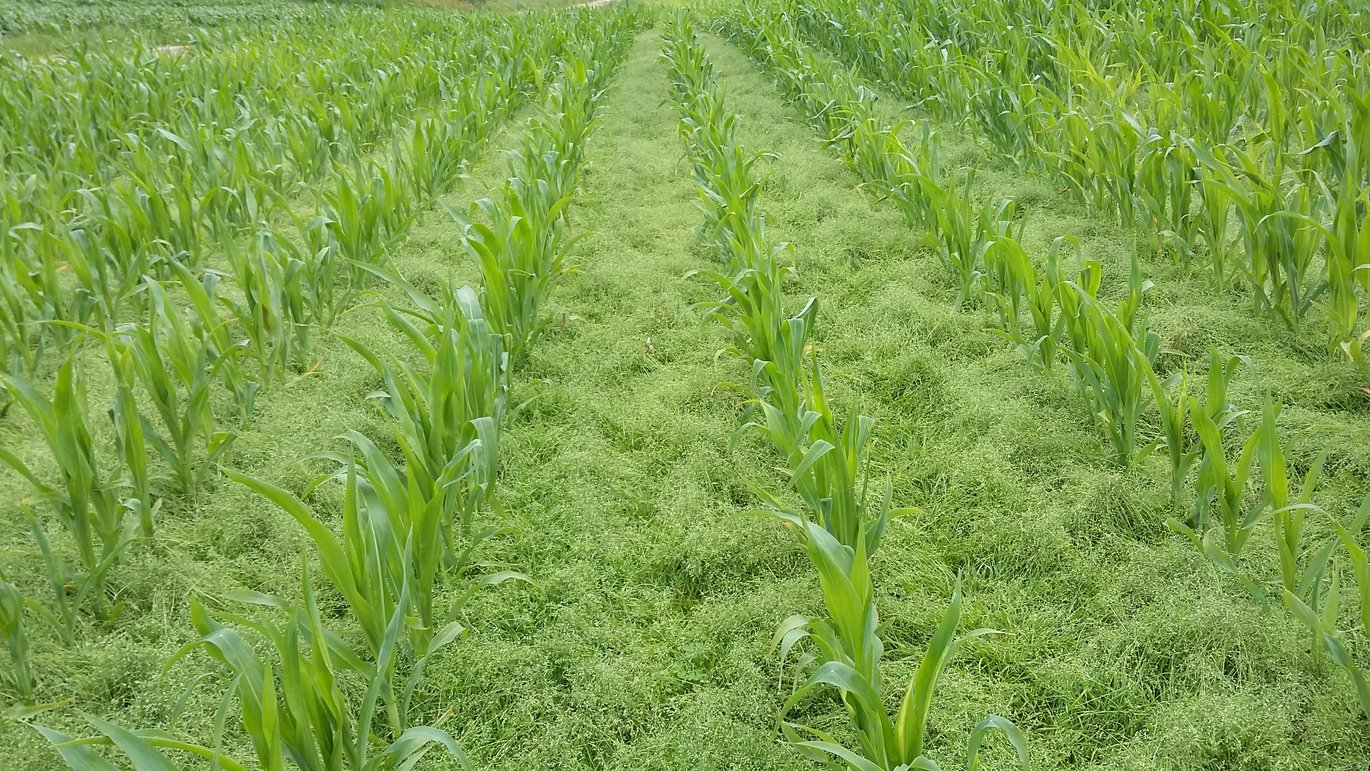New project investigates resistance development in annual meadow grass and possible non-chemical control strategies
A new project supported by the Danish Environmental Protection Agency's Pesticide Research Programme will investigate the spread of resistant populations of annual meadow grass and identify effective control strategies based on preventive measures and mechanical control.

annual meadow grass is one of the most common weed species in Denmark. It germinates continuously throughout the growing season and is, therefore, present in all crops. In addition, it can have several generations in one year.
"annual meadow grass problems are particularly severe in fields where maize or seed grass is grown. Here, the farmer has very few options for chemical weed control," explains senior advisor Mette Sønderskov from the Department of Agroecology at Aarhus University, who is leading the new project.
When chemical control methods are scarce, widespread resistance will have major consequences, especially in fields with seed grass.
"There is a very high requirement for purity in the grass seed industry, and widespread resistance could eventually mean that, for example, common meadow grass can no longer be grown because the farmers will not be able to meet the requirements," says Mette Sønderskov.
Resistance spread
This is why the researchers behind the project are concerned about the cases of ALS resistance found in annual meadow grass (Poa annua). During 2019 and 2020, resistance was confirmed in ten populations. In many cases, resistance was observed in intensive maize fields, but was also found in fields with a varied crop rotation.
"This is problematic. First of all, because we are observing resistance in ten populations over a period of only two years; prior to these findings, only a few cases had been reported in Europe. Second, the resistance is alarming because repeated use of ALS inhibitors is the main control strategy used in both maize and grass seed production. In addition, there is a frequent use of ALS inhibitors in other crops," says Mette Sønderskov.
Control strategies in maize
In cooperation with the University of Copenhagen and SEGES, the researchers from the Department of Agroecology will investigate how much the resistance has spread. The aim is to find out whether there has been a parallel development of resistance in several fields and/or several areas in individual fields, or whether the spread has occurred from few areas.
"In addition to investigating the development of resistance, we will look at the history of the fields where we have found resistance. Why are we seeing so many cases in Denmark right now? " asks Mette Sønderskov, and continues, "In many places, maize is grown year after year in the same fields, which by definition increases the risk, therefore we will test a number of different alternative control strategies in maize. What preventive measures can be implemented in the control strategy and how can we make the best use of mechanical weeding?"
Some of the strategies, which the project will test, include false seedbed combined with mechanical weeding both before and after the maize germinates.
Importance of crop rotation
According to the researchers, crop rotation is crucial for grass seed production. Seed grass is grown in a rotation with a minimum of three years between seed grass fields. The primary control strategy will therefore be to prevent excessive weed populations in the crops between seed grass. There are more control options in the crops grown between seed grasses, than in the seed grass itself.
"Therefore, we will investigate the competitiveness of a number of common crops against annual ryegrass. We will do this under controlled conditions in the greenhouse, but also in field trials. The aim is to find the crops that can help reduce weed seed production and thus decrease the soil seed bank, or at least prevent the seed bank from building up," says Mette Sønderskov, who points out that the soil seed bank is also a focus area of the project.
"We want to get a better understanding of the survival of annual ryegrass seeds in the soil. Therefore, we will bury seed samples at different depths in the soil and continuously examine their germination capacity," she concludes. Different types of tillage will place the seeds at different soil depths and thus are expected to have an impact on germination.
More about the project | |
| Collaborators | Department of Agroecology at Aarhus University, the University of Copenhagen and SEGES. |
| Funding | The project is funded by the Danish Environmental Protection Agency's Pesticide Research Programme, an initiative under the Danish pesticide strategy. Each year a wide range of research projects on pesticides and their impact on our environment and health are supported. In this round, seven projects have received funding to address issues ranging from soil fertility and agricultural pests to groundwater contamination and resistant bacteria. |
| Budget | 3.272.109 DKK |
| Contact | Senior Advisor Mette Sønderskov, Department of Agroecology, Aarhus University. Tel: +45 87158231 or mail: mette.sonderskov@agro.au.dk |
